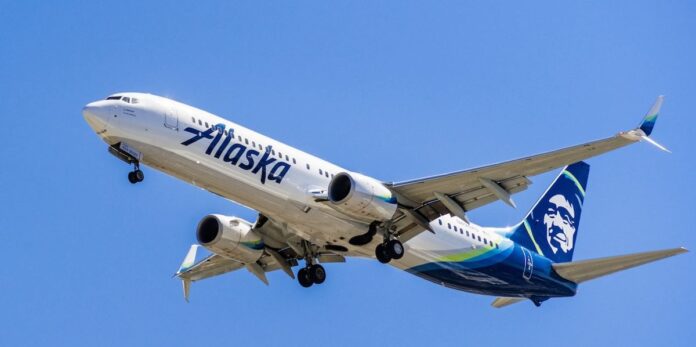The news on flight subscriptions has been coming at seemingly supersonic speeds.
Malaysia-based AirAsia unveiled on Monday a revamped version of its popular travel subscription plan, now offering unlimited flights among the 10 countries of ASEAN (the Association for Southeast Asian Nations). And Alaska Airlines, which already offers an annual flight subscription program, last week announced the launch of a club-style program that offers additional benefits for a monthly fee.
This comes barely a month after Saudia, the national flag carrier of Saudi Arabia, announced a partnership with travel-tech subscription specialist Caravelo to launch a new product in the Middle East. While Saudia didn’t offer specifics at the time, such announcements in the past have always produced new subscription offerings.
So what gives? Could all those developments be coincidence — or a sign of things to come?
Experts lean toward the latter explanation. And even though it may take years before airlines are jockeying for monthly fees with the fervor of TV streamers like Netflix and Disney Plus, they are likely already thinking of it, said Caravelo CEO Iñaki Uriz.
I think now everyone is to some degree having [airline subscriptions] in their radar. Some are already doing things, others are just thinking about it. But it’s very much in everyone’s mind.
Iñaki Uriz – Caravelo
“Around three or four years ago, pretty much nobody was talking about subscription programs in the industry. That is no longer the case,” he said. “I think now everyone is to some degree having that in their radar. Some are already doing things, others are just thinking about it. But it’s very much in everyone’s mind.”
It’s no surprise Uriz would cheerlead for the product. In his words, the Barcelona-based company has been “evangelizing” for subscription services for years. Last year it partnered with Hungary-based Wizz Air on Europe’s first flight subscription service. Besides Wizz Air, Alaska and Saudia, it counts among its partners Volaris, Jazeera Airlines and FlyArystan, among others.
But Uriz isn’t alone in being bullish on subscriptions.
Sinead Finn, founder of Affinnity, an airline and ancillaries tech consultancy, sees a few key reasons why airlines are taking this route, starting with customers.
“Today’s customer is more used to subscription models – Amazon, Netflix and Spotify have made sure of this,” she said before listing the benefits to airlines. “They’re great for loyalty. Subscribers tend to spend more money than other customers. And they provide a regular and more predictable revenue stream, which helps with overall planning.”
Eric Léopold, founder of Threedot, a Swiss-based travel consultancy, said the digital transformation underway in the airline industry with the push toward new distribution capabilities and retail sales will open the way to more subscriptions.
“Many airlines have old technology, legacy processes, so including anything new in that is difficult,” Léopold said. “What will happen in the next five years is airlines are moving to new processes, new technology and with that it will be much easier to do subscriptions.”
It won’t happen overnight, and the type of subscription will vary by business needs — think something more along the lines of Amazon Prime’s package of benefits than Netflix’s all-you-can-watch model. Whatever the format, he predicts subscription models will become available everywhere in the next few years.
“But it takes a business case for an airline to make that decision,” he added, “and the business case is not obvious. That’s why it takes time.”
Unlimited flight subscriptions
Important differences distinguish the types of subscriptions offered by airlines.
All-you-can-fly models are usually designed to help airlines fill empty seats and boost ancillary sales. They are geared to customers who have the flexibility to book enough flights among the routes that are offered and within available booking periods to make the deal worthwhile to them.
“This model is about monetizing distressed inventory that we know is going to go to waste,” Uriz said. “Now we can sell this across this subscription.”
Subscribe to our newsletter below
AirAsia Move (formerly AirAsia Superapp) is offering a limited number of annual passes for $288, though the specific cost varies by the currency of the country in which the pass is purchased. Those who purchase a pass are entitled to an unlimited number of available flights in addition to exclusive discounts on hotels and rides.
Redeemed flights are subject to taxes, fees, add-ons and other applicable charges. Bookings must be made at least 14 days before departure, and the availability of free seats is dependent on the supply on a particular route. The company said it redeemed 80,000 seats in the previous iteration of its subscription program.
“We are happy to finally bring back a new version of the popular travel pass — with a refreshed name, Unlimited-ASEAN International Pass — ensuring travelers a seamless and affordable travel pass while exploring ASEAN,” said Nadia Omer, CEO of AirAsia Move. “This offering reaffirms our commitment to providing travelers with one convenient travel solution, encompassing AirAsia flights and AirAsia Move’s offerings under one unlimited pass.”
Other flight subscription models
The second type of plan — a trip or multi-pass model — is the one Caravelo calls “the truest form of travel subscriptions” and where Uriz sees the greatest benefits for airlines. For a recurring fee, usually monthly, subscribers get access to a set number of trips.
Caravelo’s partnership last year with Wizz Air is an example. The multi-pass product served customers on domestic flights within Italy or international flights from Poland, with customers paying a fixed fee every month in exchange for either a one-way or roundtrip flight each month.
Subscriptions like these can increase demand and market share, while creating a more stable, recurring revenue stream. “That typically is what creates the biggest impact [for airlines],” Uriz said.
Caravelo partnered on such a program in 2022 with Alaska Airlines, making it the first major carrier based in the United States to launch a flight subscription program.
“You know people are already purchasing every single month by default,” Uriz said of the subscription model. “So if you subscribe to Alaska Airlines, you are committing to purchase flights in August, September, October. Do you know where you’re going in October? Of course not. But you are already purchasing, and that drives a lot of new demand and hyper loyalty. It’s like you don’t even consider other options. Why would I consider another option if I have already booked?”
Again, though, the model is likely to appeal to a limited swath of travelers who fly frequently on the routes offered. That’s part of the reason Léopold sees a third subscription model — known as a club or membership subscription — as the one most likely to “become ubiquitous” in the sector.
What will happen in the next five years is airlines are moving to new processes, new technology, and with that it will be much easier to do subscriptions.
Eric Léopold – Threedot
Club subscriptions don’t offer flights any more than Amazon hands out books for an Amazon Prime membership. Instead, the focus is on additional benefits and other perks in exchange for an annual or recurring fee.
Alaska’s newest subscription offer is an example. Travelers pay $5 a month to access exclusive savings along with a voucher for streaming-fast inflight Wi-Fi.
Léopold calls such deals part of the “evolution of loyalty.” As more payments become digital, he sees such subscriptions replacing or linking with existing rewards programs that are often tied to credit cards.
“All those things are going to merge in the future,” he said. “That’s the major trend, and that’s driven by digital evolution.”
Léopold subscribes to the easyJet Plus card, paying an annual fee for benefits such as preferred seat selection, speedy boarding, bag drop desks and extra cabin bags — the types of ancillaries many airlines charge à la carte. He flies often enough that the annual fee pays for itself — while easyJet secures his greater loyalty.
“Once I pay [for] that card, every future flight on easyJet will look cheaper to me because of all those things which are already included, which means that I will always choose EasyJet for European flights,” he said. “That’s how they get me into being loyal. I see all airlines will have a product like that one day.”
PhocusWire senior reporter Linda Fox contributed to this report.


